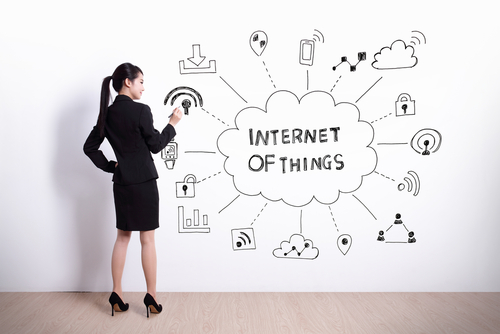
One of the most commonly used terms in recent years is the “Internet of Things” or “IoT”. It has become more common these days as more and more businesses have learned about it, realized the critical role it could play in their business setup and how the future of their business could profitably depend on it.
At first, the concept was assumed to be something that only the larger companies needed to worry about or something only they could afford to implement. But once the meaning was clarified and small business owners realized what it ensued, they found out it could be something they too could take advantage of.
Of course, we are getting ahead of ourselves. Let us start with what exactly that IoT is:
What is it?
The Internet of Things is the collection of everyday gadgets and devices that can be connected to the internet – and that is the simplest definition. If you can connect a gadget to the “Internet,” you have a “Thing” in IoT.
Apart from simply being connected, the devices can also talk to one another as well as to us, thus transmitting data from the fringe of the network to the center (servers) and beyond (other fringe devices).
The first parts of business that were ready to accept IoT was the manufacturing and processing sector which made use of it quiet early. The technology was used for the organizing of tools, machines and people, as well as for the tracking of their positions.
Since it was first introduced to the world in the late 80s and early 90s, the IoT has now taken over a huge part of the internet and it is estimated that by the year 2020 there will be 25 billion things connected to one another.
That alone, should be a good wake up sign for you if you haven’t implemented that technology in your business yet.
How will it help your Small Business?
Of course, the first question you will want answered is how it is that the technology can help your business grow. Well, here are two ways:
- Your business will be more efficient and you will have more intelligence available to you as your devices will be able to connect to, command/respond to, and deliver reports that are real-time and accurate, enabling you to make more informed decisions.
- The readily available connectivity and the devices that are already connected to the IoT allows for the adoption of new ways of doing things as it makes it easy to add other things. It also opens the door for other innovators to create new methods/processes that can easily be assimilated into the old way of doing things – thus making improvements to your process.
What kind of Hosting Will IoT Need?
Ok, we now know what the advantages are and we can agree that it is good for your business. The only thing that remains is to see the kind of resources IoT will require – specifically the hosting aspect of it.
Just like any gadget, anything that is connected to the IoT will need a place where it can store its data and can then later retrieve it from. You, as a business owner will need to be concerned about where exactly it is that the data is stored because you will need to be sure about how much control you have over it and also because you will need to be sure you have made provision for ample resources (hard disk, high speed access, security, etc.).
But, as the devices that are connected in an IoT are hardware devices, access points, data networks, etc. they will serve as data input points and the information will usually be consumed directly, which means there is no need for data storage or hosting (apart for the ones that are in-built in the devices, i.e.).
Instead, a suite of software components lies in the center of the network that enables the collection of the data from the remote “fringes,” the control of the “Things,” ensuring there is a secure communication between the devices, and acting as a gateway for the data translation to and from processors and enterprise business systems.
This suite of the software is known as the IoT patform.
This means, if you are planning to implement IoT in your business you will not have to worry about where it is that you are going to store the data, per se. The technology and architecture can easily be integrated into your current setup and all the data or information that you are able to input can be stored in the hosting solutions that you already have in place.
This is mainly because the data you get from the IoT acts as the raw material for your enterprise solutions/systems which then transform it into meaningful information. And as these solutions already have a storage mechanism and architecture, you won’t need to add anything new to your structure.
In other words, IoT in an ideal small business environment and despite its addition of input devices will require no additional storage or hosting space you just use or enhance (in case of outdated or overflowing hosting solutions) your existing hosting solutions (although it would be advisable to move to the cloud if you are using “Things” that are physically removed from the premises or even the country you are located in) and keep going on.
That’s a win-win situation for you.



















